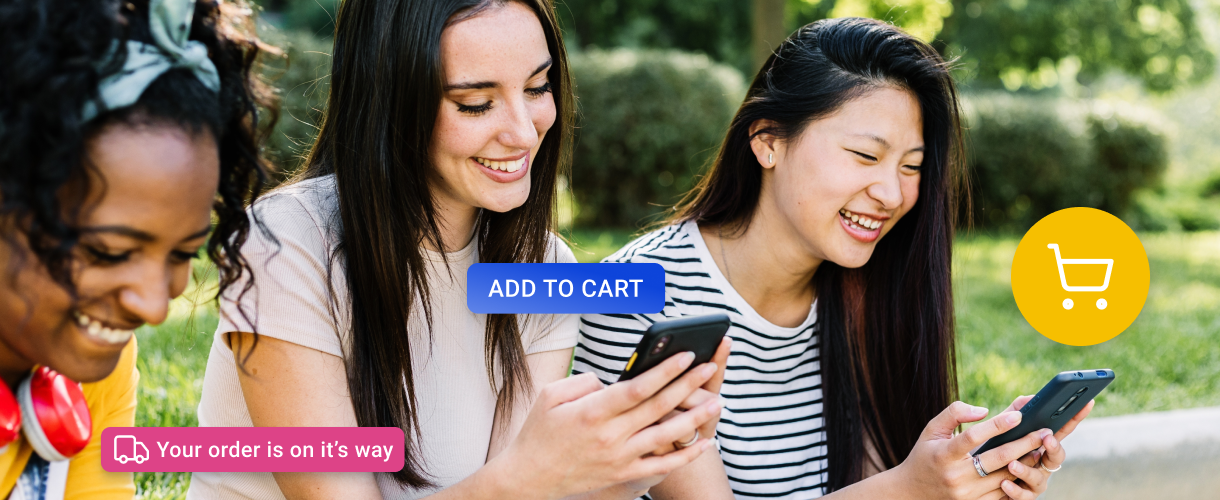Convenience is king and immediacy reigns supreme.
Mobile shopping has become the frontline of the retail experience.
If your brand isn’t prioritizing a mobile-first shopping strategy, you’re not just behind the curve—you’re missing out on one of the most significant revenue opportunities in today’s market.
The Mobile Shift: Where Shoppers Are Today
The statistics are undeniable: mobile commerce (mCommerce) now accounts for approximately 73 percent of all eCommerce sales worldwide.
From browsing to buying, consumers are increasingly turning to their smartphones as their primary shopping tool. This shift isn’t just a trend; it’s a fundamental change in how people interact with brands. Whether it’s the ability to shop from anywhere or the ease of a few taps to complete a purchase, mobile shopping aligns perfectly with the fast-paced lives of today’s consumers.
Over 79 percent of smartphone users have made a purchase using their mobile device in the past six months. Yet, despite this clear shift, many brands still lag in offering a seamless mobile shopping experience.
The result?
Frustrated customers, abandoned carts, and lost sales. If your mobile shopping experience isn’t intuitive, fast, and engaging, you’re likely turning potential customers away at the very moment they’re ready to buy.
Creating a Mobile-First Shopping Experience
So, how can brands ensure they’re not only meeting but exceeding the expectations of mobile shoppers? Here are some essential strategies:
Responsive Design Is Non-Negotiable
Your website must be fully responsive, ensuring it looks and functions perfectly on any screen size. This goes beyond simply shrinking your desktop site to fit a smaller screen. A truly responsive design rethinks the user experience, prioritizing ease of navigation, readability, and quick access to key features like product searches and the checkout process.
Streamline the Checkout Process
Mobile shoppers expect convenience, and nothing derails a purchase faster than a complicated checkout process. Simplify it. Offer guest checkout options, integrate digital wallets like Apple Pay or Google Pay, and minimize the number of steps required to complete a purchase. The fewer taps, the better.
Speed Is Everything
Mobile users are notoriously impatient. According to Google, 53 percent of mobile users will abandon a site if it takes longer than three seconds to load. Optimize your site’s formance by compressing images, leveraging content delivery networks (CDNs), and reducing server response times. A few seconds can make the difference between a sale and an abandoned cart.
Use Push Notifications and SMS
Engage mobile users with timely and relevant push notifications or SMS messages. These can be powerful tools for reminding customers of abandoned carts, alerting them to sales, or suggesting products based on their browsing history. However, be mindful of frequency—too many notifications can lead to app uninstalls or unsubscribes.
Personalization at Scale
Mobile shopping is personal. Use data to tailor the shopping experience to individual customers. From personalized product recommendations to custom landing pages based on browsing behavior, the more relevant the experience, the more likely customers are to engage and convert.
Incorporate Mobile-Friendly Content
Content is still king, even on mobile. But the way it’s consumed on mobile is different. Focus on visual storytelling with high-quality images and videos that load quickly. Keep text concise and easy to read on smaller screens. Consider integrating shoppable posts on social media platforms that drive directly to your mobile store.
The Value of a Mobile-First Strategy
Investing in a mobile-first shopping experience is no longer optional—it’s critical. Here’s why:
- Increased Conversion Rates: A well-designed mobile experience reduces friction and enhances the likelihood of purchase, directly impacting your bottom line. Mobile traffic now accounts for nearly 60 percent of all internet traffic, making it essential to capture and convert these users.
- Enhanced Customer Loyalty: Customers who have a positive mobile shopping experience are more likely to return. By making their mobile journey smooth and satisfying, you build loyalty and encourage repeat purchases.
- Expanded Reach: Mobile shopping breaks down geographical barriers. With the right strategy, you can reach customers anytime, anywhere, expanding your market far beyond the limits of physical locations or desktop-bound shoppers. It’s estimated that by 2025, mobile internet adoption will reach 90 percent globally
- Better Data Collection: Mobile interactions provide valuable data that can be used to further refine and personalize the shopping experience, leading to better customer insights and more effective marketing strategies.
Don’t Get Left Behind
The retail world has changed, and mobile shopping is at the forefront. Brands that fail to adapt to this new reality risk being left behind. By prioritizing a mobile-first shopping experience, you not only meet your customers where they are, but you also create a competitive edge that can drive growth, loyalty, and long-term success.
As consumers continue to demand convenience, immediacy, and personalization, the brands that rise to the challenge will be the ones that thrive in the new era of retail. So, the question is: Is your brand ready to lead the way in mobile shopping?











